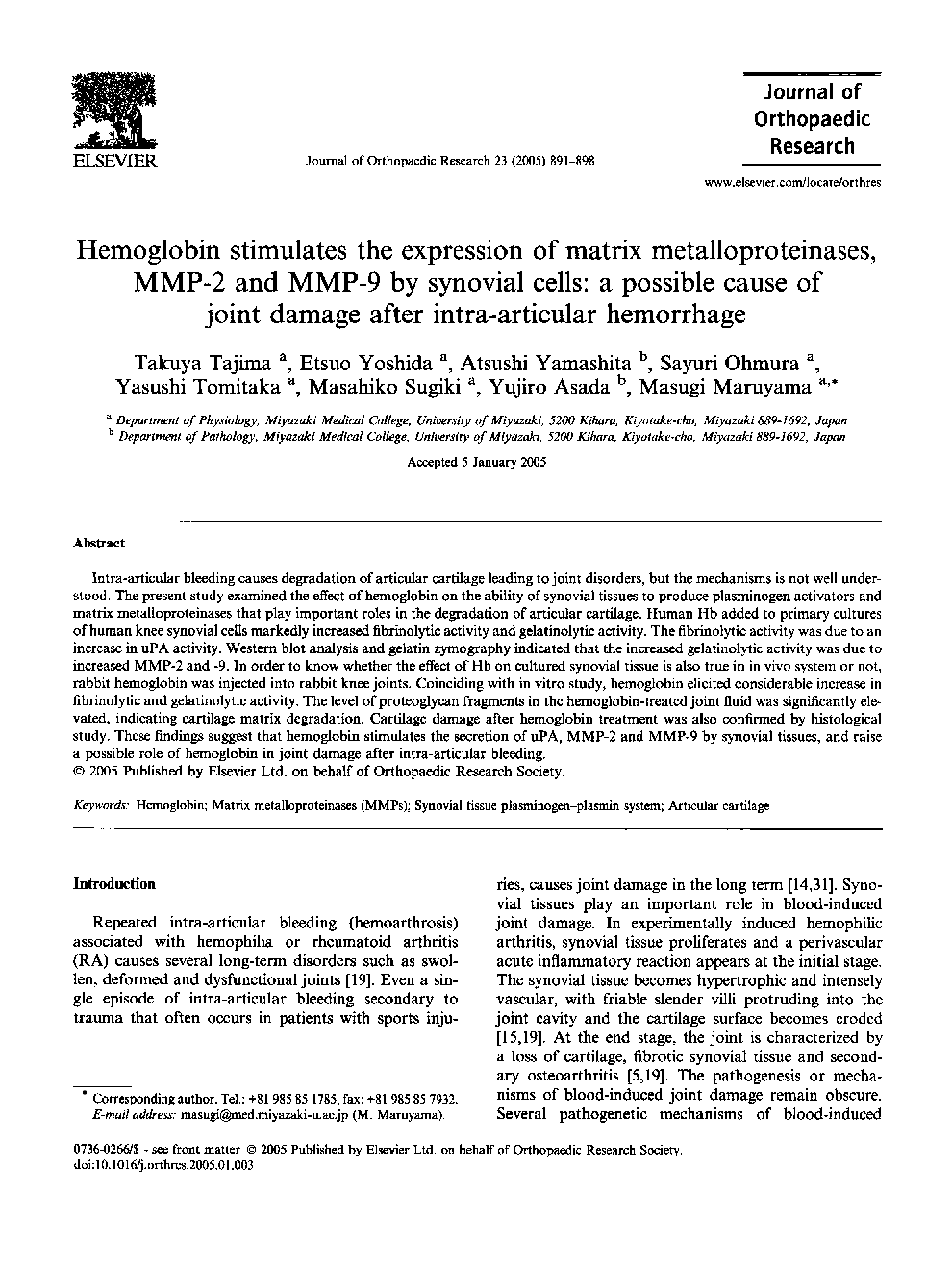| Article ID | Journal | Published Year | Pages | File Type |
|---|---|---|---|---|
| 9353950 | Journal of Orthopaedic Research | 2005 | 8 Pages |
Abstract
Intra-articular bleeding causes degradation of articular cartilage leading to joint disorders, but the mechanisms is not well understood. The present study examined the effect of hemoglobin on the ability of synovial tissues to produce plasminogen activators and matrix metalloproteinases that play important roles in the degradation of articular cartilage. Human Hb added to primary cultures of human knee synovial cells markedly increased fibrinolytic activity and gelatinolytic activity. The fibrinolytic activity was due to an increase in uPA activity. Western blot analysis and gelatin zymography indicated that the increased gelatinolytic activity was due to increased MMP-2 and -9. In order to know whether the effect of Hb on cultured synovial tissue is also true in in vivo system or not, rabbit hemoglobin was injected into rabbit knee joints. Coinciding with in vitro study, hemoglobin elicited considerable increase in fibrinolytic and gelatinolytic activity. The level of proteoglycan fragments in the hemoglobin-treated joint fluid was significantly elevated, indicating cartilage matrix degradation. Cartilage damage after hemoglobin treatment was also confirmed by histological study. These findings suggest that hemoglobin stimulates the secretion of uPA, MMP-2 and MMP-9 by synovial tissues, and raise a possible role of hemoglobin in joint damage after intra-articular bleeding.
Related Topics
Health Sciences
Medicine and Dentistry
Orthopedics, Sports Medicine and Rehabilitation
Authors
Takuya Tajima, Etsuo Yoshida, Atsushi Yamashita, Sayuri Ohmura, Yasushi Tomitaka, Masahiko Sugiki, Yujiro Asada, Masugi Maruyama,
